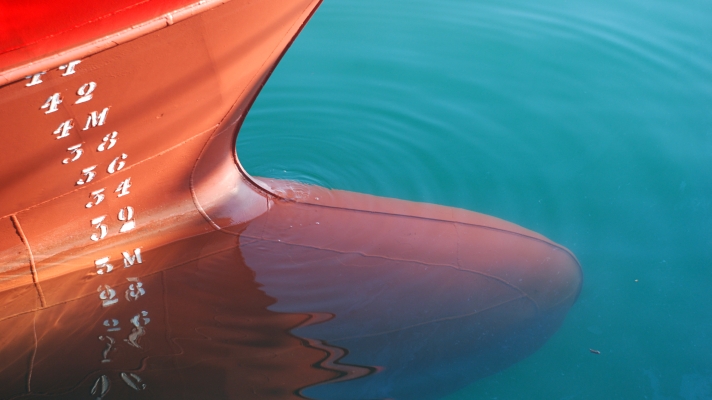Before commencing gas freeing operations, air moving equipment has to be grounded. On a tank barge where this was not carried out properly, static electricity caused an explosion.
The incident was covered in a recent Mars Report. These reports are compiled (anonymously) by The Nautical Institute to prevent other accidents from happening. A summary of this incident:
On a tank barge, personnel were preparing to undertake gas freeing of the cargo tanks. Cargo tank booby hatches and Butterworth openings were open and the flammable vapours within the cargo tank were being removed with mechanical air moving equipment. There was an explosion and the barge sustained extensive damage.

Breached cargo tank.
Investigation findings
The investigation established that when outside air is introduced into the cargo tank during gas freeing, the vapour/air mixture within the tank and near the tank openings can reach the flammable range. If the air moving equipment used to gas free the cargo tank is not the proper type, is not properly maintained, or is not properly electrically bonded (grounded) and secured to the vessel’s structure, static electricity generated by the equipment can discharge as an electric arc and ignite the flammable mixture.
The air blowers that were recovered from the exploded tank barge had either missing or improperly maintained bonding (ground) wires. This was likely the cause of the explosion.
Advice from The Nautical Institute
- All personnel should be aware of the critical importance of bonding (grounding) air moving equipment such as blowers or fans before commencing gas freeing operations.
- Proper bonding means the contact point to the vessel or barge is clamped to bare metal, not a painted surface. Simply resting the blower/fan on bare metal is NOT an adequate means of bonding.
- Clamps used with the bonding wire or strap should be free of corrosion, with sufficient tension to ensure a tight connection when clamped to the vessel structure.
- Fans or blowers should be properly secured to prevent movement due to vibration.
- Inspect all air moving equipment before first use each day and ensure that all attached accessories (cones, ducting, etc.) are tightly connected to the blower/fan.
Mars Reports
This accident was covered in the Mars Reports, originally published as Mars 202032, that are part of Report Number 332. A selection of this Report will also be published in SWZ|Maritime’s July/August 2020 issue. The Nautical Institute compiles these reports to help prevent maritime accidents. That is why they are also published on SWZ|Maritime’s website.
More reports are needed to keep the scheme interesting and informative. All reports are read only by the Mars coordinator and are treated in the strictest confidence. To submit a report, please use the Mars report form








